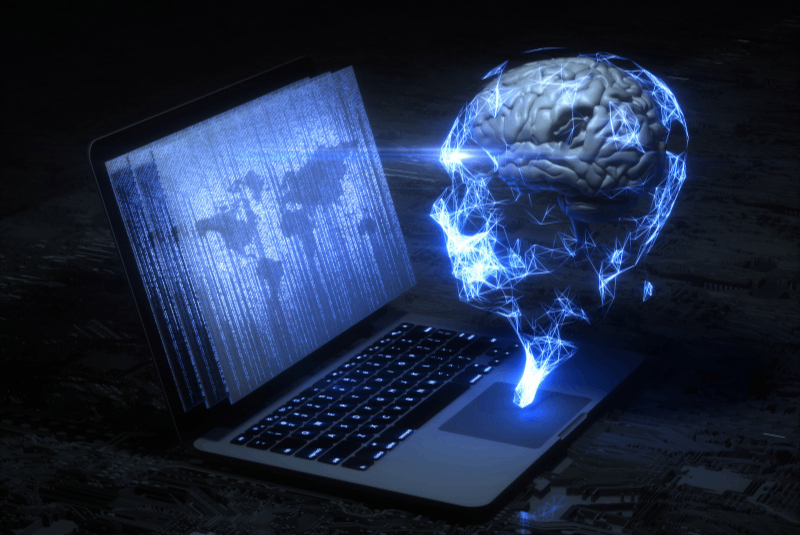2019 is hyped to be the year of artificial intelligence.
But if your immediate thoughts are flooding to the worlds of films like Ex Machina, Blade Runner, or I, Robot, think again. The artificial intelligence (A.I.) of 2019 looks much different than humanistic androids or robot butlers. Still, some of what science fiction writers have been dreaming up for the last few decades may be coming true.
Ahead, we look at what A.I. actually is, where it comes from, and how it has already changed our world and daily lives in a myriad of ways. Plus, we look ahead to what the future of A.I. holds for 2020, 2030, and beyond. For Example, Netotraffic is one of the leading company in Artificial Intelligence Marketing. Let’s see how AI Changes our world.
What is artificial intelligence?
A.I. or artificial intelligence refers to intelligence or so-called “cognitive functions” that can be developed and implemented in machines. Although robots and virtual assistants are commonly considered the main functions of A.I., the technology actually spans a multitude of forms, practices, uses, and industries — from healthcare and finance to the military and video games.
What is the history of artificial intelligence?
The initial idea of the robot began in the early 1900s. However, it wasn’t until the 1940s and 50s that the true concept of A.I. began to take shape among the world’s greatest scientists and mathematicians. The truth is, the computer itself is the first attempt at creating an artificially intelligent machine.
In the United States, the ENIAC was the first electronic programmable computer. It used concepts explored and developed by famed mathematician and A.I. enthusiast Alan Turing. It was the most advanced abstract machine that could simulate human logic and help humans solve problems. Over time, the problems that computers “solved” for humans became increasingly complex.
How has artificial intelligence changed our world so far?
According to Jason Simons of ICS, a Houston Managed IT services professional, “One of the many things A.I. can do for us is automating services that we use every day, for example paying a bill over the phone.”
To be sure, this is a far cry from robots who can make your breakfast and pick out your daily outfit. But it’s true that small innovations like voice recognition have been at the heart of A.I. thus far in its history.
Simons goes on to say:
“… One of the most innovative concepts we’ve had the privilege to learn about involves using A.I. in call centers for pre-screening inbound customers to assess their mood and directing the call accordingly. Automated attendants detect voice rhythms during the initial call. If an unusual voice rhythm (indicating an angry customer, for instance) is identified, the call is routed to a department specializing in customer satisfaction and retention.”
For those with a futuristic mindset, it’s vital to recognize that A.I. has surpassed voice recognition and is currently employed in various other ways. Here are some additional applications of A.I. today:
- Your email platform learns what emails are important and what emails are spam.
- Streaming services like Netflix learn and predict your preferences based on what you watch.
- Social media sites like Instagram and Facebook learn your interests and preferences based on your engagement, location, likes and dislikes, and behavior.
- Amazon’s Alexa and Apple’s Sirilearns to better understand your preferences and commands based on your behavior and past commands.
Why are people obsessed with A.I., and why has it gained so much popularity in recent years?
To comprehend the popularity of artificial intelligence across diverse fields, one needs to delve into history and analyze the motives behind the invention of tools and industrial devices.
Throughout time, humans have been attempting to create tools and machines that make life easier. Cavemen created axes, cutting implements, and weapons for hunting and cleaning their food. Later, people invented and utilized the plow with mules and oxen to cultivate crops. They also created the watermill to harness faster and more convenient energy from naturally flowing water. Fast-forward to the industrial revolution, and we see the steam engine, the locomotive, electric generators, typewriters, and more.
Basically, humans want to outsource their work and troubles wherever they can. We want what we do for work (and play) to be faster, easier, cheaper, and overall better.
This brings us to the invention of the computer and the Internet. Humans continued to take the need for faster, better, stronger to its maximum limits. Together, technology and the World Wide Web possess the capability to redirect almost all the intelligence, knowledge, and insights humanity has amassed and relies on in daily life, transferring it to machines.
This may sound like the absolute dreariest definition of what A.I. really is, and perhaps that is so. Still, it’s true that not everyone is exuberant by the widespread implementation of artificial intelligence and automation.
Their biggest fear? Nothing can stop it.
Although A.I. has certainly changed our world for the better in many ways, this article would be remiss not to mention that A.I. has also been damaging in many ways and has the potential to do further damage as well. From privacy concerns to the frightening ramifications if A.I. “learns” incorrectly (or learns too much), A.I. is surely an unwieldy force that no one is adequately capable of predicting.

